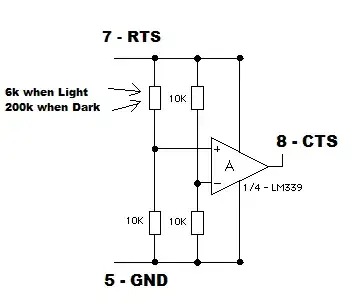
I am trying to use serial port pins to power this circuit. Basically I want to send a voltage high to pin 8 when somebody "opens the box" that this circuit is in. Otherwise, it will send a voltage low when the box is closed. I can detect this in software just fine, my question is with hardware.
Will the serial port be able to power this circuit? I looked at the LM339 datasheet and it seems like the current needed is pretty low, but i dont know the serial port's power capabilities. Any advice would be great, thanks!